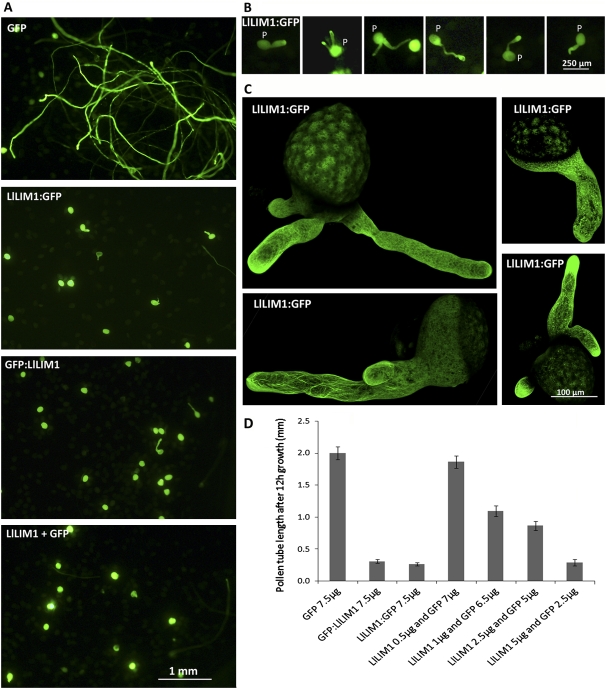Figure 3.
Overexpression of LlLIM1 impaired pollen germination, tube growth, and pollen tube morphology. A and B, Lily pollen grains (P) bombarded with 7.5 μg of GFP-expressing plasmids, LlLIM1:GFP, GFP:LlLIM1, or cobombarded with 2.5 μg of GFP-expressing plasmid and 5 μg of LlLIM1-expressing plasmid were cultured in media for 12 h and observed by epifluorescence microscopy with a GFP filter. C, Projective images of elongating pollen tubes showed multiple pollen tubes emerging from a single pollen grain. Z-serial sections used to assemble the projective images were recorded and edited by fluorescent laser scanning confocal microscopy and an application program. D, Analysis of pollen tube lengths of pollen bombarded with 7.5 μg of the individual plasmids indicated or various combinations of LlLIM1- and GFP-expressing plasmids, but 2.5 μg of GFP-expressing plasmids was used as the minimal amount of transformation marker. A representative example from three independent data sets is shown: control pollen tubes overexpressing GFP showed normal morphology and average length (2.00 ± 0.10 mm), but the mean length of pollen tubes was reduced with increasing amounts of LlLIM1, such as bombardment with 7.5 μg of LlLIM1:GFP (0.31 ± 0.03 mm) or GFP:LlLIM1 plasmids (0.27 ± 0.02 mm) or cobombardment with 5 μg of LlLIM1 and 2.5 μg of GFP plasmids (0.3 ± 0.05 mm). Error bars indicate 95% confidence intervals (n = 60–80).

